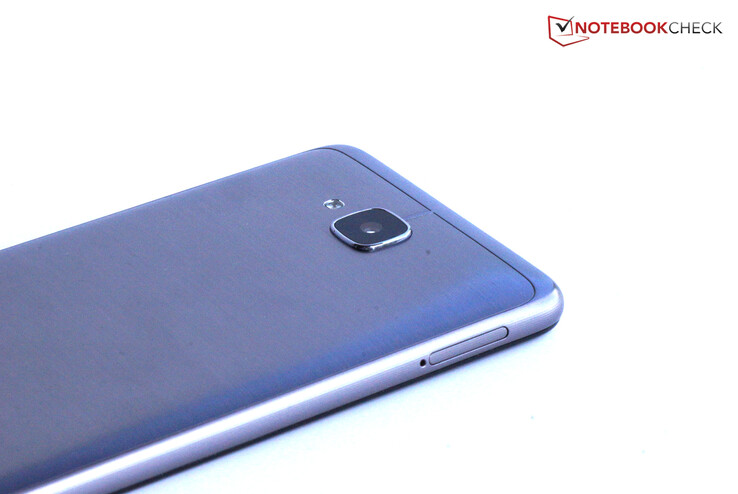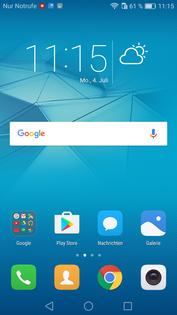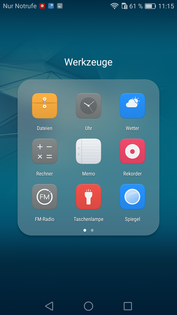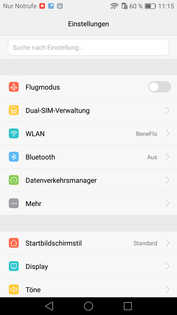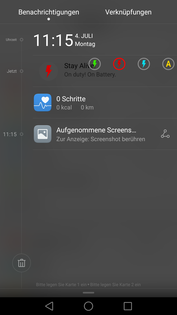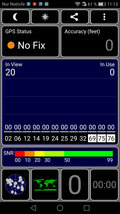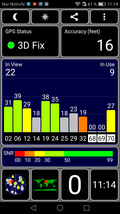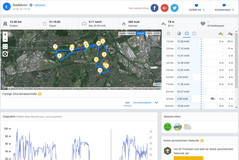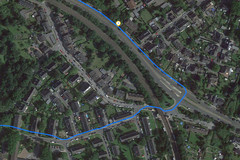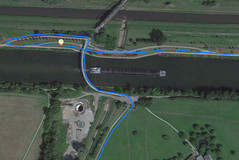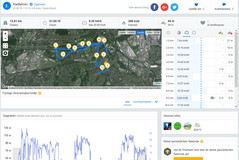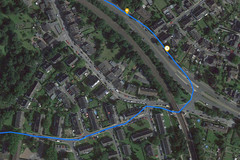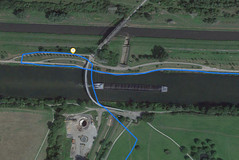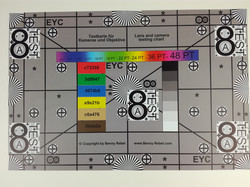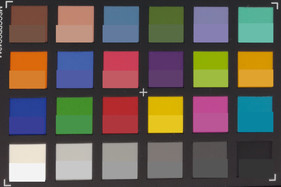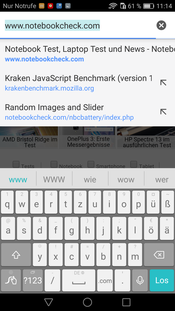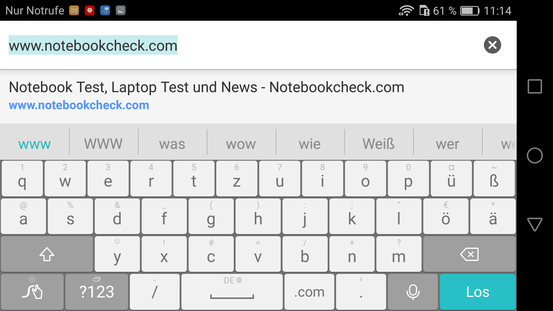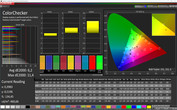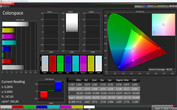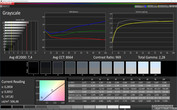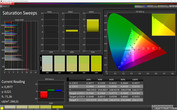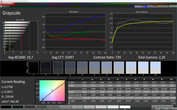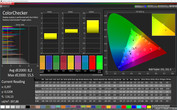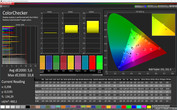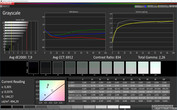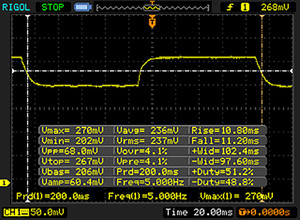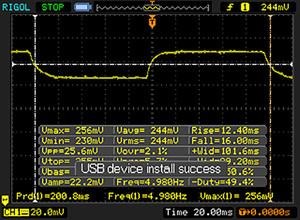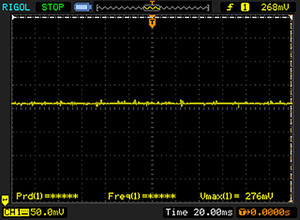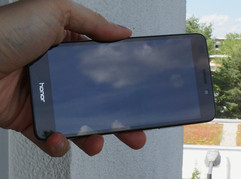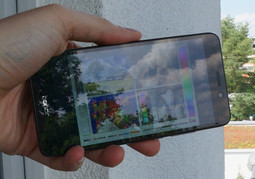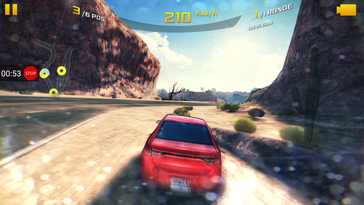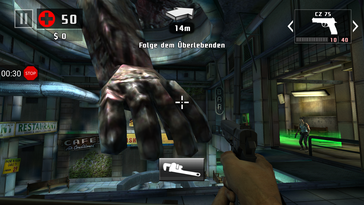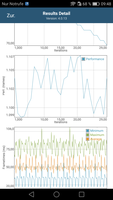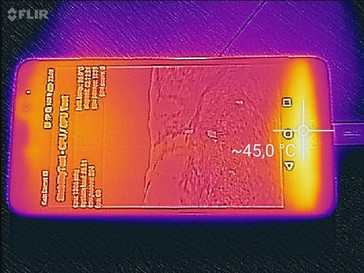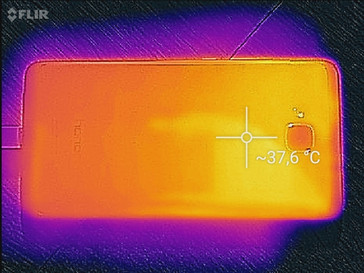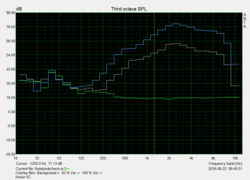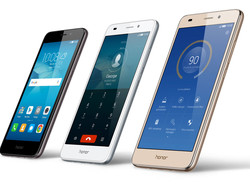Honor 5C Smartphone Review
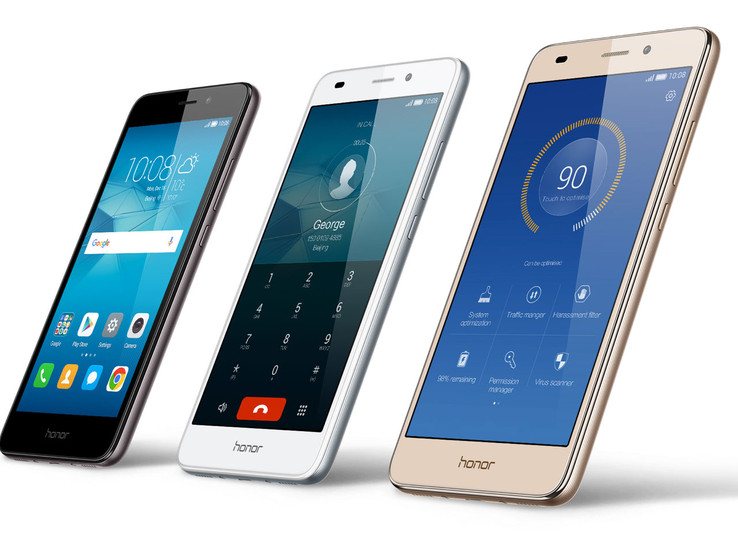
For the original German review, see here.
Huawei's subsidiary, Honor, has specialized in making life hard for established smartphone manufacturers with a very good price-performance ratio of its devices. With its 5.2-inch Honor 5C, the Chinese company has now launched a smartphone on the market that settles in the lower mid-range for under 200 Euros (~$223). This might even be successful with a self-developed SoC, metal casing, high-resolution cameras, and dual antenna.
Its larger brother is the 5.5-inch Honor 5X with a slightly lower resolution camera and fingerprint scanner. The battery, installed memory, and screen resolution are identical.
The Honor 5C has to compete against 5-inch devices from the same price range, such as HTC's Desire 530, Samsung's Galaxy J5, LG's X Screen or OnePlus' X.
Case
It is obvious that the casing has been designed very ergonomically when holding Honor's 5C. All edges are curved and the smartphone is pleasant to hold. However, Honor's 5C is rather slippery due to the relatively sleek surfaces. With a weight of 156 grams (~5.5 oz), the smartphone is not a lightweight compared with other handsets. Nevertheless, it did not seem heavy or too light.
The casing's back is made of brushed aluminum. It cannot be opened and the battery cannot be removed. Both nano-SIM slots, one of which can be used with a micro-SD card, are accessed with the included tool for pulling out the tray on the casing's side.
The casing is available in three colors: overall gold, silver with a white front, and gray with a black front.
Connectivity
16 GB of storage and 2 GB of RAM are standard in the price range; OnePlus' X offers slightly more working memory. FM radio can be received on Honor's 5C, and NFC is also present. USB OTG, i.e. option for connecting external storage devices, is not supported.
The micro-SD reader supports cards of up to 128 GB, but one of the two SIM slots will have to be sacrificed for it.
Software
The operating system of our review sample is based on Android 6.0. The security patches are from the 1st of May, 2016. Honor covers it with Huawei's own EMUI 4.1 user interface that modifies the looks significantly. The software is nice to use. However, it is a matter of taste whether the user finds it better than standard Android - we found some things, such as the settings and pull-down menu rather more complicated.
The manufacturer has also installed a number of additional apps, which will probably not appeal to purists. Besides games, a number of social media apps and tools such as a compass or mirror app for the front-facing camera, Huawei's apps "Design", "Phone Manager" and health and fitness apps are preloaded. Sometimes we found the handling rather user-unfriendly here. For example, things such as the display background are easier to change in the setting than via the "Designs" app. Furthermore, some app functions already exist in Android in other places.
Communication & GPS
Honor's 5C communicates with mobile networks via GSM, UMTS and LTE. Although the five LTE bands are sufficient in Europe, it will probably be impossible to access networks in other regions of the world, particularly since only two UMTS frequencies and four GSM frequencies are supported. The reception was good in both indoors and outdoors in an urban area.
The Wi-Fi 802.11 b/g/n standards are available for accessing networks. Thus, it is not possible to use the 5 GHz frequency range. We tested the reception with a new standardized Wi-Fi test that will also be used for all future tests: The Linksys EA 8500 is used as the reference router. We position the handset exactly one meter (~3 ft) away from it and use the iPerf and jPerf test tools. The transmission rates are considerably lower when the performance of Honor's 5C is compared with premium smartphones such as Samsung's Galaxy S7 Edge or Huawei's P9. However, our handset does not support 802.11 ac that makes much higher speeds possible. Nevertheless, the graphs clearly illustrate that the transmission rates of Honor's 5C fluctuate significantly.
Subjectively, in the practical test, websites opened at an average speed near the router (FritzBox 6490) at full reception strength. The page opened at roughly the same speed at a distance of ten meters (~33 ft) and through three walls; the full reception strength was maintained.
| Honor 5C Mali-T830 MP2, Kirin 650, 16 GB eMMC Flash | Samsung Galaxy S7 Edge Mali-T880 MP12, Exynos 8890, 32 GB UFS 2.0 Flash | Huawei P9 Mali-T880 MP4, Kirin 955, 32 GB eMMC Flash | |
|---|---|---|---|
| Networking | 453% | 326% | |
| iperf Server (receive) TCP 1 m (MBit/s) | 49.8 | 303 508% | 249 400% |
| iperf Client (transmit) TCP 1 m (MBit/s) | 58.3 | 290 397% | 205 252% |
Although the GPS module could not track us indoors, some satellites were found. It took a moment before our position was found with an accuracy of five meters (~16 ft) outdoors.
We took Honor's 5C and Garmin's Edge 500 professional navigation system on a mountain bike ride to gather practical results. The route measured by both devices deviates by 250 meters (~273 yd) at the end. Although this is not yet critical, it is quite a difference. Overall, the accuracy of the professional navigation system seems higher; Honor's 5C clearly deviates from the driven route in some places. Straight paths are often curved. However, overall, the GPS module does a good job and it is quite suitable for private use.
Telephone & Call Quality
Huawei has also modified Google's standard phone app slightly. The design is more angled. The keypad appears right after it is opened, and recent calls are displayed above it. Contacts and favorites can be accessed via two tabs.
We quite liked the call quality: The earpiece can get very loud, but it does not distort audibly. Voices sounded pleasant and clear. The microphone is also good, and transmitted our voice clearly and relatively naturally to the other end. However, unfortunately it had problems with quiet tones. Thus, the user had to speak rather louder before the call quality of Honor's 5C impressed us.
Cameras
Honor's 5C has a 13 megapixel camera with auto focus and LED flash on the rear in the standard configuration. However, the photo quality did really impress us. Compared with the camera in the Galaxy S7 Edge, we liked the photos taken with Honor's 5C better since the photos of the premium handset look too sharp. The iPhone 6s Plus offers more details and its sharpness is more pleasant. The color reproduction of Honor's 5C also appealed to us: It is perhaps slightly too yellow, but it conveys a relatively warm impression. Honor's 5C also deals quite well with back light. On the other hand, the more expensive devices have a clear advantage in low-light conditions. The photos of Honor's 5C quickly look blurry and out of focus.
Videos can be recorded in 1080 at 30 frames per second with the rear-facing camera. We also liked the image quality here, and the colors are displayed in warm tones.
The front-facing camera offers a generous 8 megapixels, reproduces colors well and achieves good image sharpness. Overall, both cameras surprised us pleasantly; problems only evolved in low-light conditions without flash.
We additionally analyze the camera's colors and image sharpness with a standardized reference photo and color card that we photograph. It is seen that the colors are too dark compared with the reference, and that white has a visible beige tint which confirms our observation of very warm color tones.
The image sharpness and reproduction in our reference photo are good, and details also look sharp. However, the edges are clearly blurred. Colored areas also look slightly spotty in the zoomed photo.
Accessories & Warranty
Honor ships the smartphone with a charger, USB cable, an in-ear headset and a SIM tool. Other accessories specifically made for Honor's 5C are not currently available. However, a stylish Bluetooth speaker for 30 Euros (~$33) or Honor's own selfie stick for 20 Euros (~$22) can be found in the manufacturer's own VMall.
A 24-month warranty is included, which is just as long as the retailer's legal warranty period.
Input Devices & Handling
Huawei preloads its "Huawei Swype" keyboard by default. "SwiftKey" is also on the system and of course Google's standard keyboard can be enabled. Huawei's keyboard did not impress us in the practical test since the small keys often led to typos in practical use. We also found the keyboard too cluttered with double assignments, which made it very confusing. However, this is a matter of taste and it is always possible to swap the input device for another one.
The touchscreen responded very quickly to our inputs and is very accurate into the corners. The menu keys are implemented as software buttons. The volume control and power button are situated on the right. The finger can find them easily and they have a relatively clear pressure point.
Display
The 5.2-inch Full HD panel based on IPS technology that Honor has installed in the 5C is certainly a highlight in this price range. It is very bright with an average of 498.4 cd/m² and also very homogeneously illuminated with 93%. Honor's 5C achieves a maximum of only 490 cd/m² in the practical APL50 test, but this is still very bright. The maximum brightness is maintained with the sensor.
| |||||||||||||||||||||||||
Brightness Distribution: 93 %
Center on Battery: 515 cd/m²
Contrast: 1051:1 (Black: 0.49 cd/m²)
ΔE ColorChecker Calman: 6.2 | ∀{0.5-29.43 Ø4.77}
ΔE Greyscale Calman: 7.4 | ∀{0.09-98 Ø5}
Gamma: 2.28
CCT: 8664 K
| Honor 5C IPS, 1920x1080, 5.2" | HTC Desire 530 IPS, 1280x720, 5" | LG X Screen IPS, 1280x720, 5" | Samsung Galaxy J5 2016 AMOLED, 1280x720, 5.2" | OnePlus X Active Matrix OLED, 1920x1080, 5" | Huawei P9 Lite IPS, 1920x1080, 5.2" | Honor 5X IPS, 1920x1080, 5.5" | |
|---|---|---|---|---|---|---|---|
| Screen | 7% | -5% | 6% | -18% | 2% | 13% | |
| Brightness middle (cd/m²) | 515 | 375 -27% | 392 -24% | 289 -44% | 312 -39% | 505 -2% | 535 4% |
| Brightness (cd/m²) | 498 | 376 -24% | 376 -24% | 291 -42% | 314 -37% | 468 -6% | 521 5% |
| Brightness Distribution (%) | 93 | 91 -2% | 90 -3% | 96 3% | 91 -2% | 88 -5% | 85 -9% |
| Black Level * (cd/m²) | 0.49 | 0.32 35% | 0.27 45% | 0.74 -51% | 0.43 12% | ||
| Contrast (:1) | 1051 | 1172 12% | 1452 38% | 682 -35% | 1244 18% | ||
| Colorchecker dE 2000 * | 6.2 | 6 3% | 7.5 -21% | 4.7 24% | 6.28 -1% | 4.1 34% | 4.88 21% |
| Colorchecker dE 2000 max. * | 11.4 | 9.5 17% | 13.1 -15% | 7.3 36% | 5.8 49% | 8.66 24% | |
| Greyscale dE 2000 * | 7.4 | 4.5 39% | 9.9 -34% | 3 59% | 8.24 -11% | 4.9 34% | 5.2 30% |
| Gamma | 2.28 96% | 2.26 97% | 2.07 106% | 2.03 108% | 2.12 104% | 2.5 88% | 2.26 97% |
| CCT | 8664 75% | 6975 93% | 9704 67% | 6291 103% | 8145 80% | 7116 91% | 7766 84% |
* ... smaller is better
The contrast of 1051:1 is quite decent, but the black level of 0.49 cd/m² is higher than those of the comparison devices. Naturally, the Galaxy J5 and OnePlus X stand out here since both use AMOLED screens and can thus display absolute black.
The tests using the spectrophotometer and CalMAN software deliver details about color reproduction. Since it is possible to set the color temperature either manually or with predefined "warm" and "cool" profiles, we also test these settings. A strong bluish tint is visible in the "standard" color profile, and bright tones and white are clearly falsified. This is logically even stronger in the "cool" color profile. The color deviations are also greatest here. This turns into a somewhat weaker greenish tint in the "warm" color profile. The panel is not suitable for professionals. Users should not rely too much on the displayed colors when checking photos either.
The measured response times are decent. Furthermore, the screen does not utilize pulse width modulation for dimming the brightness.
Display Response Times
| ↔ Response Time Black to White | ||
|---|---|---|
| 23 ms ... rise ↗ and fall ↘ combined | ↗ 10.8 ms rise | |
| ↘ 11.2 ms fall | ||
| The screen shows good response rates in our tests, but may be too slow for competitive gamers. In comparison, all tested devices range from 0.1 (minimum) to 240 (maximum) ms. » 51 % of all devices are better. This means that the measured response time is worse than the average of all tested devices (20.2 ms). | ||
| ↔ Response Time 50% Grey to 80% Grey | ||
| 28.4 ms ... rise ↗ and fall ↘ combined | ↗ 12.4 ms rise | |
| ↘ 16 ms fall | ||
| The screen shows relatively slow response rates in our tests and may be too slow for gamers. In comparison, all tested devices range from 0.165 (minimum) to 636 (maximum) ms. » 37 % of all devices are better. This means that the measured response time is better than the average of all tested devices (31.6 ms). | ||
Screen Flickering / PWM (Pulse-Width Modulation)
| Screen flickering / PWM not detected | |||
In comparison: 53 % of all tested devices do not use PWM to dim the display. If PWM was detected, an average of 8091 (minimum: 5 - maximum: 343500) Hz was measured. | |||
The screen's high brightness allows using the smartphone in the outdoors. However, the eyes have to cope with stressing reflections in bright surroundings. Direct sunlight is also too much for the very bright screen. Displayed contents are again quite legible as soon as the smartphone is tilted away slightly from the sunlight.
The viewing angle stability is also good thanks to the IPS technology. The image remains quite visible even from very flat angles.
Performance
Standard chips like everyone has? This does not come into question for Huawei, and consequently not for its subsidiary Honor. In-house SoCs are a must, and it is the new HiSilicon Kirin 650 that is also found, for example, in Huawei's P9 Lite. It offers enough performance reserves for most tasks, is built in the 16 nanometer process, and therefore works quite efficiently. The eight cores are divided into two clusters of 1.7 GHz and 2.0 GHz.
Honor's 5C can clearly outperform most equally-priced devices. The achieved scores are double or higher in some benchmarks compared with Samsung's Galaxy J5, HTC's Desire 530 and LG's X Screen. OnePlus' X can keep up, and is usually roughly on par with our review sample.
The graphics unit is also much faster than those in the comparison devices, or somewhat slower than the Adreno 330 in OnePlus' X. The graphics solution in our review sample is an ARM Mali-T830 MP2 that clocks at up to 600 MHz.
| AnTuTu v6 - Total Score (sort by value) | |
| Honor 5C | |
| OnePlus X | |
| HTC Desire 530 | |
| Samsung Galaxy J5 2016 | |
| LG X Screen | |
| Huawei P9 Lite | |
| Honor 5X | |
| Geekbench 3 | |
| 64 Bit Single-Core Score (sort by value) | |
| Honor 5C | |
| Samsung Galaxy J5 2016 | |
| LG X Screen | |
| Huawei P9 Lite | |
| Honor 5X | |
| 64 Bit Multi-Core Score (sort by value) | |
| Honor 5C | |
| Samsung Galaxy J5 2016 | |
| LG X Screen | |
| Huawei P9 Lite | |
| Honor 5X | |
| GFXBench (DX / GLBenchmark) 2.7 | |
| T-Rex Onscreen (sort by value) | |
| Honor 5C | |
| OnePlus X | |
| HTC Desire 530 | |
| Samsung Galaxy J5 2016 | |
| LG X Screen | |
| Huawei P9 Lite | |
| Honor 5X | |
| 1920x1080 T-Rex Offscreen (sort by value) | |
| Honor 5C | |
| OnePlus X | |
| HTC Desire 530 | |
| Samsung Galaxy J5 2016 | |
| LG X Screen | |
| Huawei P9 Lite | |
| Honor 5X | |
| GFXBench 3.0 | |
| on screen Manhattan Onscreen OGL (sort by value) | |
| Honor 5C | |
| OnePlus X | |
| HTC Desire 530 | |
| Samsung Galaxy J5 2016 | |
| LG X Screen | |
| Huawei P9 Lite | |
| Honor 5X | |
| 1920x1080 1080p Manhattan Offscreen (sort by value) | |
| Honor 5C | |
| OnePlus X | |
| HTC Desire 530 | |
| Samsung Galaxy J5 2016 | |
| LG X Screen | |
| Huawei P9 Lite | |
| Honor 5X | |
| GFXBench 3.1 | |
| on screen Manhattan ES 3.1 Onscreen (sort by value) | |
| Honor 5C | |
| Samsung Galaxy J5 2016 | |
| Huawei P9 Lite | |
| 1920x1080 Manhattan ES 3.1 Offscreen (sort by value) | |
| Honor 5C | |
| Samsung Galaxy J5 2016 | |
| Huawei P9 Lite | |
| PCMark for Android - Work performance score (sort by value) | |
| Honor 5C | |
| OnePlus X | |
| HTC Desire 530 | |
| Samsung Galaxy J5 2016 | |
| LG X Screen | |
| Huawei P9 Lite | |
| Honor 5X | |
A very similar impression evolves in Internet browsing. Honor's 5C loads intricate websites faster than most comparison devices from this price range. However, OnePlus does a slightly better job here again.
| Mozilla Kraken 1.1 - Total (sort by value) | |
| Honor 5C | |
| OnePlus X | |
| HTC Desire 530 | |
| Samsung Galaxy J5 2016 | |
| LG X Screen | |
| Honor 5X | |
| Huawei P9 Lite | |
| Octane V2 - Total Score (sort by value) | |
| Honor 5C | |
| OnePlus X | |
| HTC Desire 530 | |
| Samsung Galaxy J5 2016 | |
| LG X Screen | |
| Honor 5X | |
| Huawei P9 Lite | |
| WebXPRT 2015 - Overall (sort by value) | |
| Honor 5C | |
| OnePlus X | |
| HTC Desire 530 | |
| Samsung Galaxy J5 2016 | |
| Honor 5X | |
| Huawei P9 Lite | |
| JetStream 1.1 - Total Score (sort by value) | |
| Honor 5C | |
| OnePlus X | |
| HTC Desire 530 | |
| Samsung Galaxy J5 2016 | |
| LG X Screen | |
| Honor 5X | |
| Huawei P9 Lite | |
* ... smaller is better
Unfortunately, the 16 GB of internal storage is packed with preloaded bloatware with very little storage space remaining. It outperforms the comparison devices many times over in random read, and it also has a clear lead in all other sectors.
We test accessing the micro-SD card with our Toshiba Exceria Pro M401 (THN-M401S0640E2) reference card that accomplishes a maximum of 95 MB per second in read and 80 MB per second in write. Honor's 5C is far from these maximum speeds, and does not come close to the very fast micro-SD card reader in Samsung's Galaxy J5. Overall, the reader's speed is situated midfield.
| AndroBench 3-5 | |
| Sequential Read 256KB (sort by value) | |
| Honor 5C | |
| OnePlus X | |
| HTC Desire 530 | |
| Samsung Galaxy J5 2016 | |
| LG X Screen | |
| Honor 5X | |
| Huawei P9 Lite | |
| Sequential Write 256KB (sort by value) | |
| Honor 5C | |
| OnePlus X | |
| HTC Desire 530 | |
| Samsung Galaxy J5 2016 | |
| LG X Screen | |
| Honor 5X | |
| Huawei P9 Lite | |
| Random Read 4KB (sort by value) | |
| Honor 5C | |
| OnePlus X | |
| HTC Desire 530 | |
| Samsung Galaxy J5 2016 | |
| LG X Screen | |
| Honor 5X | |
| Huawei P9 Lite | |
| Random Write 4KB (sort by value) | |
| Honor 5C | |
| OnePlus X | |
| HTC Desire 530 | |
| Samsung Galaxy J5 2016 | |
| LG X Screen | |
| Honor 5X | |
| Huawei P9 Lite | |
| Sequential Read 256KB SDCard (sort by value) | |
| Honor 5C | |
| HTC Desire 530 | |
| Samsung Galaxy J5 2016 | |
| LG X Screen | |
| Huawei P9 Lite | |
| Sequential Write 256KB SDCard (sort by value) | |
| Honor 5C | |
| HTC Desire 530 | |
| Samsung Galaxy J5 2016 | |
| LG X Screen | |
| Huawei P9 Lite | |
Games
| Asphalt 8: Airborne | |||
| Settings | Value | ||
| high | 26 fps | ||
| Dead Trigger 2 | |||
| Settings | Value | ||
| high | 30 fps | ||
Emissions
Temperature
The temperatures on the smartphone's front are clearly increased during load: We measured a maximum of 42.2 degrees Celsius (~108 degrees Fahrenheit), and this, on the lower edge where the menu buttons are found of all places. It is naturally good that the rear remains much cooler since that is the largest area touched when holding the handset. The temperatures are very limited locally and decrease toward the upper edge.
The smartphone's front lower area is still warm in idle mode; the upper and back areas do not heat up noticeably.
Can the smartphone uphold its performance even after a prolonged load period? The GFXBench battery test says "yes". The same sequence is rendered 30 times and the frame rate is logged. It remains stable within a range of a few frames.
(±) The maximum temperature on the upper side is 42.2 °C / 108 F, compared to the average of 35.2 °C / 95 F, ranging from 21.9 to 247 °C for the class Smartphone.
(+) The bottom heats up to a maximum of 35.9 °C / 97 F, compared to the average of 34 °C / 93 F
(±) In idle usage, the average temperature for the upper side is 36.1 °C / 97 F, compared to the device average of 32.9 °C / 91 F.
Speaker
The speaker situated on the lower edge behind the right-hand dotted grille in Honor's 5C can reach a volume of 87.9 dB(A). This is quite decent, and the sound is also better than in some other low-cost smartphones. Of course, the handset cannot match the sound of more expensive devices such as HTC's 10 or Sony's Xperia Z5. OnePlus' X also offers a better sound.
However, since the sound is not too tinny, and mids and trebles are fairly balanced and transmitting voice also functions quite well, the speaker is quite suitable for everyday use. Furthermore, a clear audio signal is transmitted via the 3.5 mm audio jack and Bluetooth for external speakers or headphones.
Energy Management
Unfortunately, Honor's 5C is not very restrained in terms of power consumption. The consumption rates in both turned off state and standby are still acceptable, but our review sample required over two watts on average in idle mode. It climbed up to 5.18 watts during load. The similarly strong OnePlus X, for example, is considerably more moderate.
| Off / Standby | |
| Idle | |
| Load |
|
Key:
min: | |
| Honor 5C 3000 mAh | HTC Desire 530 2200 mAh | OnePlus X mAh | Samsung Galaxy J5 2016 3100 mAh | Huawei P9 Lite 3000 mAh | Honor 5X 3000 mAh | |
|---|---|---|---|---|---|---|
| Power Consumption | -37% | 37% | 32% | 0% | -15% | |
| Idle Minimum * (Watt) | 0.89 | 1.58 -78% | 0.6 33% | 0.61 31% | 0.73 18% | 0.87 2% |
| Idle Average * (Watt) | 2.07 | 2.59 -25% | 0.91 56% | 1.41 32% | 2.09 -1% | 2.08 -0% |
| Idle Maximum * (Watt) | 2.15 | 2.66 -24% | 1.12 48% | 1.51 30% | 2.11 2% | 2.22 -3% |
| Load Average * (Watt) | 3.46 | 5.22 -51% | 3.04 12% | 2.56 26% | 4.15 -20% | 5.26 -52% |
| Load Maximum * (Watt) | 5.18 | 5.67 -9% | 3.2 38% | 3.1 40% | 5.05 3% | 6.34 -22% |
* ... smaller is better
Battery Runtime
Honor's 5C primarily owes its good runtimes to its generously sized battery of 11.4 Wh. Thus, it lasts 9:44 hours in the practical Wi-Fi test. This should easily get the user through a work day even when continuously used. The smartphone is depleted quickly during load. Samsung's Galaxy J5 does a better job with one hour more of runtime in the Wi-Fi test and long load runtimes. Overall, Honor's 5C offers a good battery life that definitely makes two days of use without recharging quite realistic.
| Honor 5C 3000 mAh | LG X Screen 2300 mAh | HTC Desire 530 2200 mAh | OnePlus X mAh | Samsung Galaxy J5 2016 3100 mAh | Honor 5X 3000 mAh | Huawei P9 Lite 3000 mAh | |
|---|---|---|---|---|---|---|---|
| Battery runtime | 3% | 6% | 24% | 60% | 2% | 28% | |
| Reader / Idle (h) | 16.6 | 16.3 -2% | 18.6 12% | 16.1 -3% | 26.7 61% | 17.6 6% | 23.4 41% |
| H.264 (h) | 10 | 7.6 -24% | 8.6 -14% | 11 10% | 10 0% | 9.5 -5% | |
| WiFi v1.3 (h) | 9.7 | 9.2 -5% | 7.1 -27% | 9.2 -5% | 10.7 10% | 10.7 10% | 10.1 4% |
| Load (h) | 2.6 | 3 15% | 4.2 62% | 5.7 119% | 6.7 158% | 2.4 -8% | 4.5 73% |
Pros
Cons
Verdict
OnePlus' X was quite a sensation among affordable mid-range smartphones at the time. Honor's 5C is no less surprising: High-quality components are hidden behind the naked and at a first glance not really spectacular specifications, which make our review sample a rival for considerably higher priced devices.
Example 1 - the camera: The photos look sharp, but not too sharp, offer good color reproduction and the front-facing camera also takes decent selfies. Although gimmicks such as 4 K videos are not available and the camera does not shine in low-light conditions, it nevertheless presents a great performance for the price range.
Example 2 - the screen: Full HD, high brightness, IPS - what more could we want especially as long as the three figured price still starts with a "1". Of course, the black level could be lower and a bluish tint is visible, but that is also acceptable in this price range. The high performance, large battery and decent call quality are also plus points.
Honor's 5C is a worthy and affordable rival for OnePlus' X. Our review sample clearly surpasses what is expected from this price range, particularly in terms of component quality.
Users who often need their smartphone on other continents will not get far with the few wireless networks. Buyers who want high-speed Wi-Fi will also be disappointed. Furthermore, the battery cannot be removed. Dual-SIM is nice to have, but having to choose between a second SIM or a micro-SD card is also unfortunate.
Then again, we are in a price region of under 200 Euros (~$223), and here the price-performance ratio of Honor's 5C is currently simply unbeatable. A clear purchase recommendation.
Honor 5C
- 07/06/2016 v5.1 (old)
Florian Wimmer




